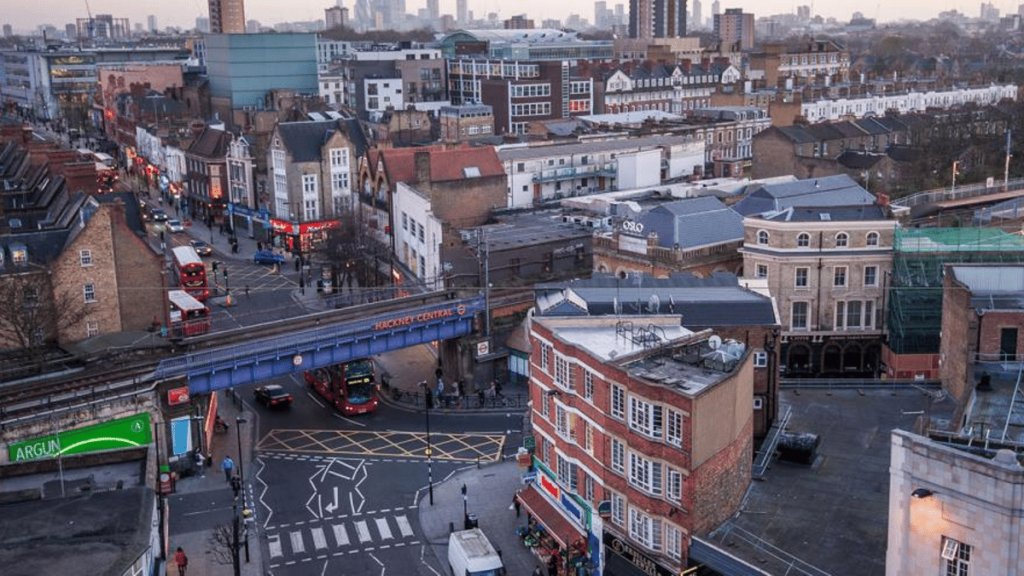Learning together: testing the potential for community wealth building with anchor organisations in the City of London and Hackney
We’re creating an action learning network to explore how large not-for-profit organisations can come together to use their institutional and economic power to achieve positive social change in the City of London and Hackney.

How can big local organisations such as hospitals, universities and local authorities use their economic power to benefit the local communities that surround them?
We’re excited to be launching a new action learning network in Hackney and the City of London to explore that very question over the next year. We’ll be working with organisations such as the Homerton Hospital, Hackney Council, City and Hackney CCG and the Corporation of London to explore this question, and test out opportunities to build and retain wealth within the local communities that surround these institutions.
What is an anchor organisation?
Anchor organisations are typically – though not exclusively – not for profit organisations that are based in a city or town and are unlikely to move location, usually because their purpose and mission is intrinsically bound up in that area. They are also often one of the major players in the local economy, and can use this economic power to create wealth and improve opportunities for the people in that place.
Anchor organisations can use many different strategies to benefit their local populations. Some of the most common ones include employment and HR practice, procurement and supply chain, investments, estates and community engagement. For example, an anchor organisation might try and increase the amount it spends with local suppliers, or increase the number of people it employs from surrounding neighbourhoods.
Supporting collective action
The action learning network forming in Hackney and the City of London has been developed to test the power of collective action, and the benefits that can be achieved when anchor organisations come together and collaborate. In North America, some of these networks have been called anchor ‘collaboratives’. Anchor collaboratives can take many forms, from those which are formal with explicit governance arrangements and funded facilitation support, to those which are more informal and meet to share learning. Crucially, they share a common geography, and have clearly defined and shared objectives that guide their work. They are often supported by a trusted independent organisation that helps to facilitate the work, and this role is typically funded by a philanthropic partner. In this instance, Renaisi is starting to take on this role.
The potential benefits of such collaboration are substantial. Some of the most common strategies that anchor organisations use to build wealth in the local community (such as hiring and procurement) have much greater potential to benefit the local community when deployed at scale. For example, several local anchors may identify a gap in local service provision – such as sustainable food supplies: one solution may be to incubate and support a local employee-owned supplier to develop – but this is much more likely to succeed if the supplier can secure a contract with a range of anchor institutions, rather than one, and the risk is reduced for the anchors.
In Cleveland, Ohio, a number of anchor organisations have collectively invested in funding and contracting a worker owned co-operative – Evergreen co-ops – which is now supplying a range of services, including laundry and solar power, to anchors in Cleveland as well as the wider economy. One anchor alone wouldn’t have benefited from this investment, but collectively their support for Evergreen means they now have a locally owned, environmentally sustainable, laundry service as part of their local supplier base.
Anchor organisations can also benefit from ‘doing things once’ in a place, rather than duplicating efforts if they work together. For example, the data that anchors will use about a local area or engaging the community to develop a collective vision about the priority projects and activities anchor organisations might pursue.
Testing and learning with anchors in Hackney and the City of London
In City and Hackney, we are facilitating some local anchor organisations to come together and join an action learning network this year that will test and develop local approaches to community wealth building. We will work with anchors such as the Homerton Hospital, the East London Foundation Trust and the Local Authority to build on their existing work with local communities and explore ways in which their collective economic power can benefit the local populations even further.
We will begin with a co-design workshop to map short and longer-term opportunities across the anchors, and then work with them through a series of thematic workshops to build up a deeper picture of how the different strategies (eg procurement or workforce) could be used to realise these opportunities.
We are excited about the opportunities to deepen the existing connections that anchor organisations in the City of London and Hackney have to their local communities, and to test out new strategies to increase the economic benefits these communities receive. Organisations such as CLES and the Health Foundation have been demonstrating the power of anchor institutions in recent years, and we’re excited to be putting some of that work into practice here.
As the recent publication of the new indices of multiple deprivation underlines, there is much to be positive about in terms of progress on social issues in the City and Hackney over recent years, but many significant issues remain for the boroughs and the people who live there. We want this programme to explore the opportunities to use and build up the wealth of the local social economy as a force for change.
We’ll be sharing the learning from this work regularly. Sign up to receive email updates.
You can also follow @Renaisi, @Juliaslay and #CityandHackneyAnchors
on Twitter.
The original research for this work was conducted by Julia in the USA and has been generously supported by the Winston Churchill Memorial Trust.
